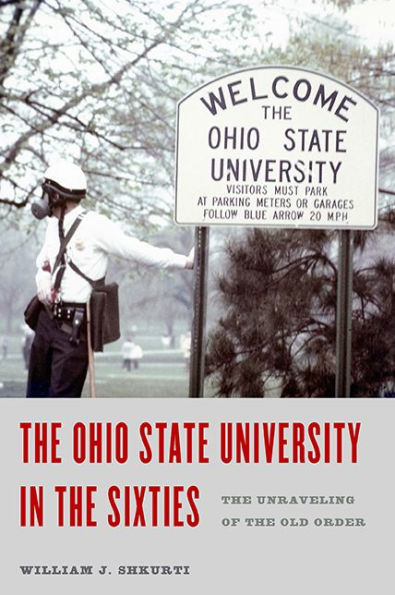The Ohio State University in the Sixties: The Unraveling of the Old Order
At 5:30 p.m. on May 6, 1970, an embattled Ohio State University President Novice G. Fawcett took the unprecedented step of closing down the university. Despite the presence of more than 1,500 armed highway patrol officers, Ohio National Guardsmen, deputy sheriffs, and Columbus city police, university and state officials feared they could not maintain order in the face of growing student protests. Students, faculty, and staff were ordered to leave; administrative offices, classrooms, and laboratories were closed. The campus was sealed off. Never in the first one hundred years of the university’s existence had such a drastic step been necessary. Just a year earlier the campus seemed immune to such disruptions. President Nixon considered it safe enough to plan an address at commencement. Yet a year later the campus erupted into a spasm of violent protest exceeding even that of traditional hot spots like Berkeley and Wisconsin. How could conditions have changed so dramatically in just a few short months? Using contemporary news stories, long overlooked archival materials, and first-person interviews, The Ohio State University in the Sixties explores how these tensions built up over years, why they converged when they did and how they forever changed the university.
1123624812
The Ohio State University in the Sixties: The Unraveling of the Old Order
At 5:30 p.m. on May 6, 1970, an embattled Ohio State University President Novice G. Fawcett took the unprecedented step of closing down the university. Despite the presence of more than 1,500 armed highway patrol officers, Ohio National Guardsmen, deputy sheriffs, and Columbus city police, university and state officials feared they could not maintain order in the face of growing student protests. Students, faculty, and staff were ordered to leave; administrative offices, classrooms, and laboratories were closed. The campus was sealed off. Never in the first one hundred years of the university’s existence had such a drastic step been necessary. Just a year earlier the campus seemed immune to such disruptions. President Nixon considered it safe enough to plan an address at commencement. Yet a year later the campus erupted into a spasm of violent protest exceeding even that of traditional hot spots like Berkeley and Wisconsin. How could conditions have changed so dramatically in just a few short months? Using contemporary news stories, long overlooked archival materials, and first-person interviews, The Ohio State University in the Sixties explores how these tensions built up over years, why they converged when they did and how they forever changed the university.
39.95
In Stock
5
1

The Ohio State University in the Sixties: The Unraveling of the Old Order
390
The Ohio State University in the Sixties: The Unraveling of the Old Order
390
39.95
In Stock

Product Details
| ISBN-13: | 9780814213070 |
|---|---|
| Publisher: | Ohio State University Press |
| Publication date: | 08/30/2016 |
| Series: | Trillium Books |
| Edition description: | 1 |
| Pages: | 390 |
| Product dimensions: | 6.40(w) x 9.30(h) x 1.30(d) |
About the Author
From the B&N Reads Blog
